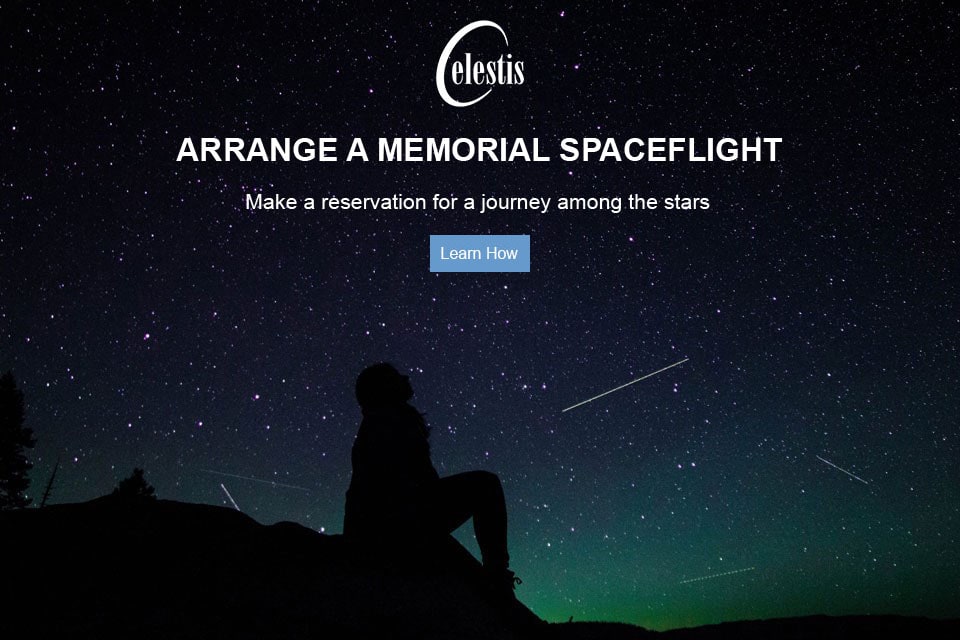Krafft A. Ehricke: Remembering a Rocket Visionary
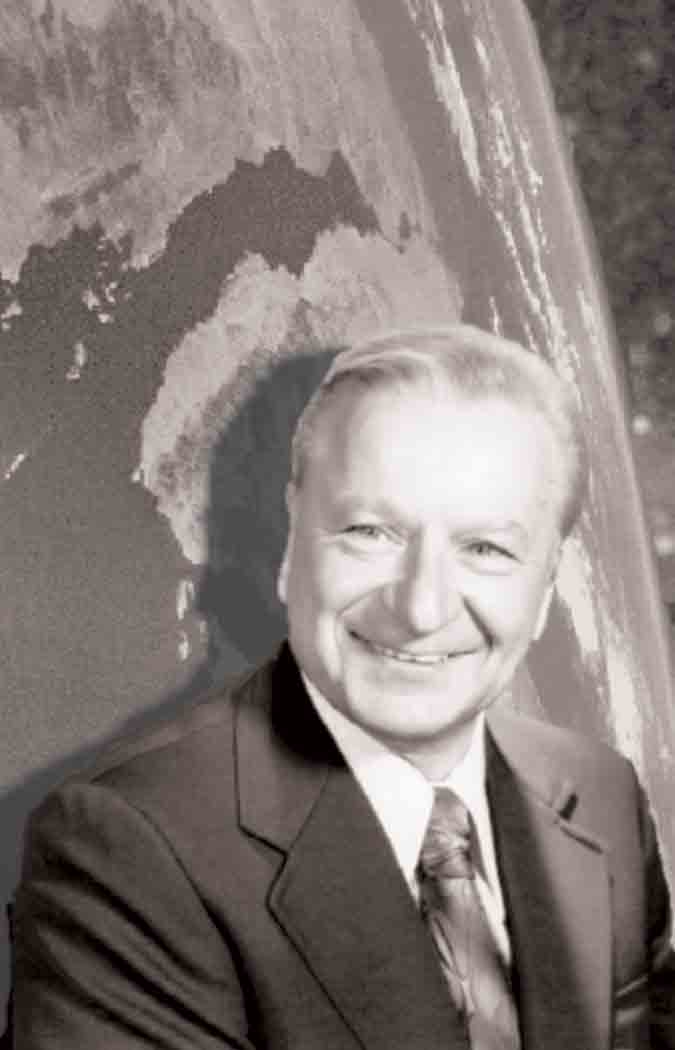
by Emily Carney
The study of spaceflight’s origins is full of names that continue to resonate: Robert Goddard, Konstantin Tsiolkovsky, Wernher von Braun, and Sergei Korolev are perhaps the most recognizable names when the topic of early rocketry comes into play. One name, however, that is more obscure – but by no means less pioneering – is Krafft A. Ehricke, whose contributions to rocketry are felt each time United Launch Alliance (ULA) launches a powerful Atlas rocket, and whenever a launch vehicle utilizes the game-changing liquid hydrogen Centaur upper stage.
Born in 1917 in Berlin, Germany, Ehricke was fascinated with spaceflight beginning in childhood. According to his Celestis biography, he founded a rocket society at the tender age of 12, fueled by his love of the Fritz Lang motion picture Woman in the Moon, which he had viewed over a dozen times. His education at the Technical University of Berlin saw him earn a degree in aeronautical engineering, but soon, he was conscripted into a war that threatened all of Europe. According to his biography: “As a German he was forced to fight the Russians in World War II under the dictator he most despised. Injured, he was transferred to the Peenemünde V-2 rocket center where he was a propulsion engineer from 1942-1945. At war's end he hid with his wife Ingeborg in the darkness of their Berlin apartment as Americans and Russians vied for the choice Germans whose scientific brilliance would one day help launch the United States and the Soviet Union into space. Krafft wanted to be taken by the Americans. He was.”
Contact us for more information or to receive launch updates
By the 1950s, the German rocket scientists who had been brought to the United States post-war as part of Operation Paperclip were at the forefront of the great technological advances of the decade. Von Braun became the most publicly visible of the scientists, participating in televised Walt Disney specials such as Man in Space and Mars and Beyond, and contributing to a 1954 Collier’s magazine issue commandingly titled “Man Will Conquer Space Soon!” The United States began to go “space gaga” as the promise of sending more advanced rockets and satellites to space inched closer to reality; consumer products spanning from food to cars were given space-inspired names and designs. And Krafft Ehricke, too, was not immune to the lure of space during this decade.
The Atlas and The Centaur Upper Stage
Even before NASA had officially formed on October 1, 1958, rocket pioneers were already thinking of more advanced launch vehicles and rocket stages. At General Dynamics, which had purchased a company called Convair in 1953, Ehricke was among the group of engineers who developed the Atlas launch vehicle. According to Lockheed Martin’s biography of the Atlas rocket family, “The Atlas family of rockets began their life in 1957 as the first successful Intercontinental Ballistic Missile (ICBM) launched by the United States, created by Lockheed Martin legacy company Convair’s design team. Facing rocketry’s biggest challenge—create a launch vehicle light enough to fly yet sturdy enough to carry thousands of pounds of fuel and payload—Convair engineer Karl J. Bossart had a breakthrough. Atlas’s lightweight, stainless steel skin would keep its shape in part due to the highly-pressurized tanks filled with rocket fuel. Without that pressure, the rocket would collapse in on itself.”
However, even the most famous rocket scientist of them all doubted this launch vehicle would work, much less stand the test of time. The Lockheed Martin biography stated, “The era’s most recognized rocket designer, Wernher von Braun felt that the Atlas would not survive the stresses of launch, calling it no more than a blimp.” Von Braun would be proven wrong, and by 1962, an Atlas would vault Mercury astronaut John Glenn into orbit. By 1963, the crewed Mercury program boasted four successful orbital flights propelled by the Atlas. While today’s Atlas family of launch vehicles are much different from their 1960s predecessors, they are still known as the workhorses of the rocket fleet. An Atlas V 401 variant successfully launched the Lucy spacecraft on the morning of October 16, 2021, proving the heritage of the mighty rocket family.
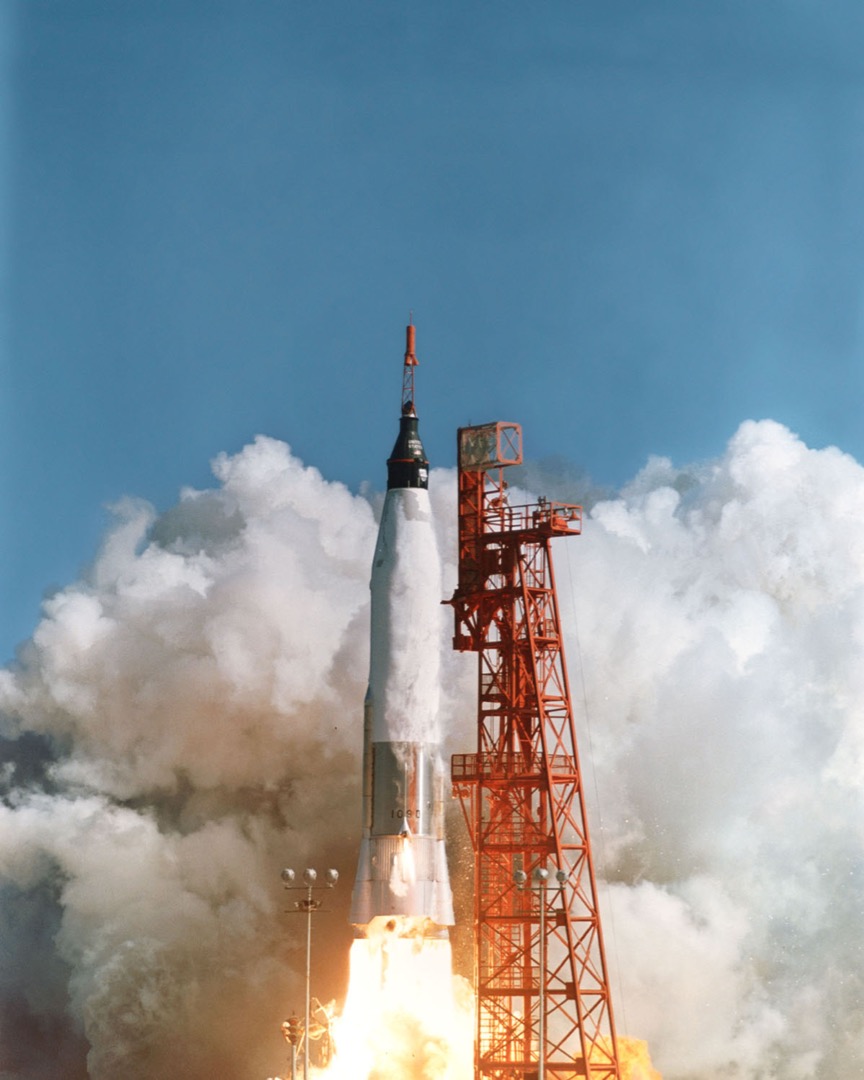
John Glenn's Mercury-Atlas launched on February 20, 1962. Image Credit: NASA
As prospective payloads became heavier and more sophisticated, Ehricke recognized the need to develop a high-energy liquid hydrogen/oxygen-propelled upper stage, and invented the D-1 Centaur stage. Again, many rocket scientists including Von Braun were skeptical that liquid hydrogen could be “tamed” enough to be useful in propulsion. Ehricke’s idea initially looked to be a bust, as the first Centaur-A launch on May 8, 1962 resulted in an explosion as the stage’s liquid hydrogen tank failed 54 seconds after liftoff. However, four years later, an Atlas-Centaur would launch Surveyor 1 to the Moon without incident; the rest of the Surveyor launches, powered by the Centaur stage, would follow the same pattern of success. By the 1970s, the Centaur upper stage would be associated with several of the legendary interplanetary missions of our time, including the two Viking Mars orbiters/landers and the two Voyagers. The first successful Mars landers and the “Grand Tour” of our solar system wouldn’t have been possible without the boost provided by the Centaur upper stage.
Ehricke’s hydrogen-fueled gamble worked to the space program’s benefit, and following his invention of the Centaur, he was made a vice president at General Dynamics. The Centaur stage is still utilized at the present time, with a next-generation variant, Centaur V, being developed for ULA’s new Vulcan launch vehicle.
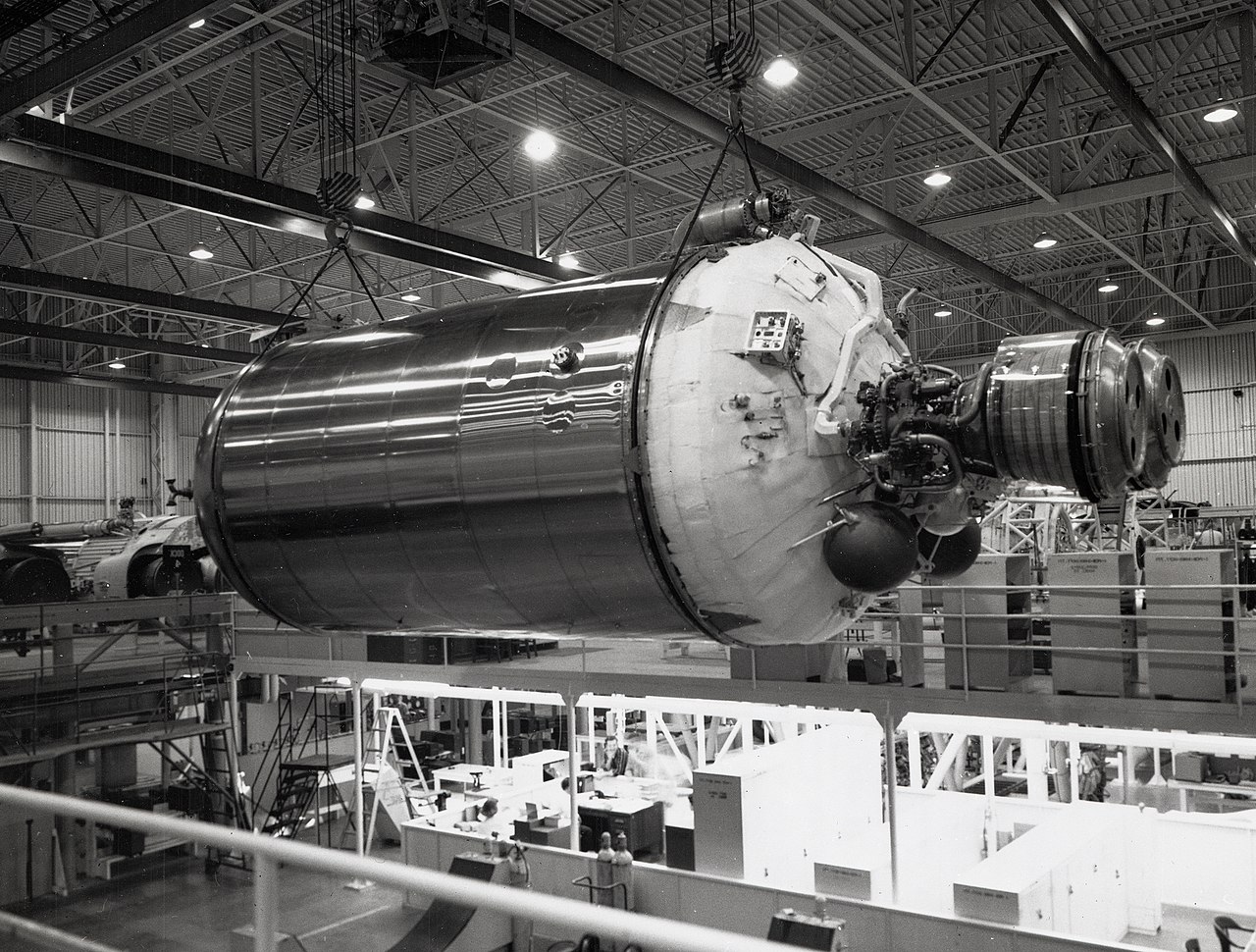
An early Centaur stage being assembled in 1962. Image Credit: NASA/General Dynamics
The 1970s and The Extraterrestrial Imperative
According to his Celestis biography, Ehricke was well-prepared to enter the 1970s, a decade that saw many futurists fight back against bleak predictions of “limits to growth.” It reads, “During the 1970s Dr. Ehricke led advanced studies at Rockwell International while working independently to introduce the first comprehensive concept and rationale for space industrialization and commercialization. This led to a priceless legacy of studies, designs, writings and even paintings describing the colonization of the Moon and the development of Earth-Moon space.” Enter what Ehricke called “The Extraterrestrial Imperative.”
According to a National Space Society review written by David Brandt-Erichsen, “Ehricke’s philosophy of the Extraterrestrial Imperative was based in part on the evolutionary tendency of living things to expand into new territories and in part on the need to transcend the limits of one small planet and assure the longterm future of humanity by utilizing the vast resources of space. He also hoped and predicted that the movement of humanity into space would usher in a new Age of Reason.” Years before Dr. Gerard K. O’Neill published the groundbreaking book The High Frontier, Ehricke’s “Extraterrestrial Imperative” touched upon many themes that would parallel O’Neill’s work: that there were no “limits to growth,” and that human ingenuity possessed no limits.
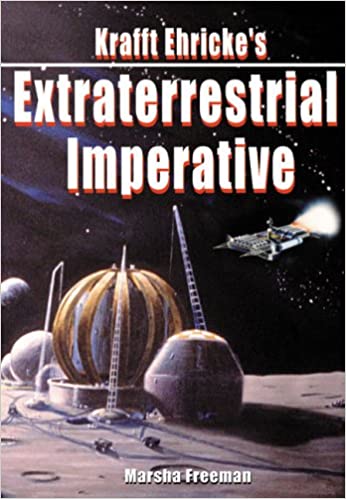
Cover of Krafft Ehricke's Extraterrestrial Imperative. Image Credit: Apogee Books
Brandt-Erichsen added, “The first [of Ehricke’s unpublished work], entitled The Extraterrestrial Imperative: From Closed to Open World, was completed in 1971. Ehricke could not find a publisher because the book contradicted the gloom-and-doom, limits-to-growth philosophies that were so prevalent at the time.” While a 2009 Apogee Books compilation of Ehricke’s writing only includes three pages of The Extraterrestrial Imperative, his collaborator Marsha Freeman did include several of his essays on the subject within his collected work. While his work did not gain the mass popularity that O’Neill enjoyed during his career, Ehricke is still considered a pioneering futurist in the space settlement canon.
Ehricke remained tirelessly committed to the advancement of space technologies and space settlement until his death on December 11, 1984. This is where the story of how Ehricke fulfilled his own “extraterrestrial imperative” began.
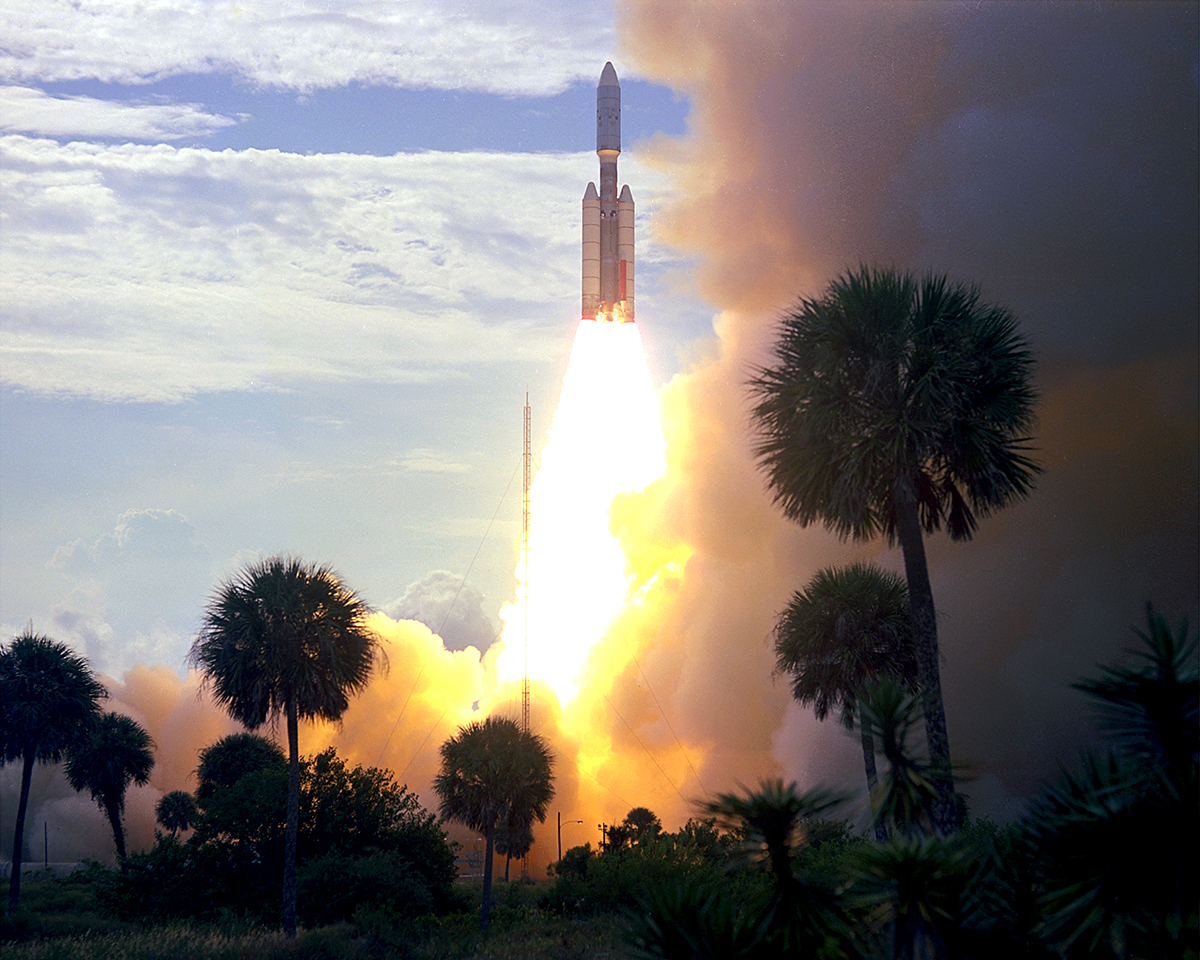
Viking 1 launched on August 20, 1975, aboard a Titan IIIE-Centaur vehicle. Some of the greatest interplanetary missions of our time made it to their destinations thanks to the high-powered Centaur stage. Image Credit: NASA.
Ehricke and The Founders Flight
Ehricke, according to several obituaries, requested to be cremated and have his ashes “saved until they can be sent into space.” In late 1984, the idea of burials in space still seemed, pardon the pun, far out. But it was an idea Ehricke had thought about for years; his thoughts were as humanity reached out further into the cosmos, it only seemed natural that burials would occur in space. After all, our descendants surely would go to space. A 1980 letter addressed to NASA History’s Ivan D. Ertel from Ehricke read in part, “Just a brief note to express to you my admiration for the monumental achievement of the Apollo Spacecraft Chronology by you and your co-authors. The volumes deserve to be put in time capsules on Earth, and later on the Moon, to make sure our descendants many thousands of years from now have access to this excellent historical record of an exciting time in which, amid the chaos on this planet, Homo Extraterrestris was born.”
Space Services Incorporated of America (SSIoA), which was led by former Mercury and Apollo-Soyuz astronaut Donald K. “Deke” Slayton, already was thinking of space burials circa 1985; it is a testament to Slayton’s own futuristic vision that he did not find this kind of send-off unusual, or impossible. In a May 9, 1985 letter to Ehricke’s widow, Ingeborg, Slayton wrote, “I was [saddened] to hear of the passing of your husband. He was one of the few genuine pioneers in the space business. [Former astronaut] Wally Schirra tells me that Mr. Ehricke wanted his ashes sent into space at an appropriate time. Since we are dealing with an organization who hopes to do that in the not too distant future, I thought I should at least make sure you were aware of that opportunity.” The company Slayton was referring to was the nascent Celestis Group, which in 1994 would become Celestis, Inc.
Fast forward to April 21, 1997: the world’s first private memorial spaceflight was ready to be launched. The Orbital Sciences Corporation aircraft Stargazer carried its payload, a Pegasus XL booster, over Spain’s Canary Islands. At approximately 38,000 feet, the rocket was released, and soon ignited.
On board the spacecraft were 24 space pioneers in their own right. The ashes of Star Trek’s Gene Roddenberry, 1960s counterculture figure Timothy Leary, and Dr. Gerard K. O’Neill were aboard the Pegasus XL that day.
…And Krafft Ehricke’s ashes were aboard, too. After a 12-year wait, his wish – to lie at rest among the stars – was finally fulfilled. To quote Celestis co-founder Charles Chafer on the occasion of the Founders Flight:
"Today we truly inaugurated the Earthview service. 24 pioneers left the Earth from Spanish soil for the new frontier of space. How appropriate that these modern explorers begin their journey from the departure point of the explorers of the new world over five hundred years ago.” It’s also only appropriate that Ehricke – a futurist who saw how spaceflight could benefit humanity – would become a space pioneer even in death.


